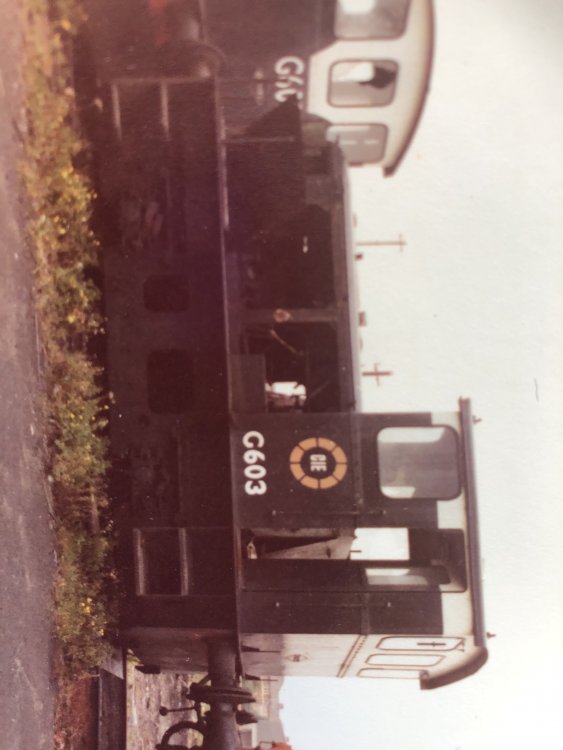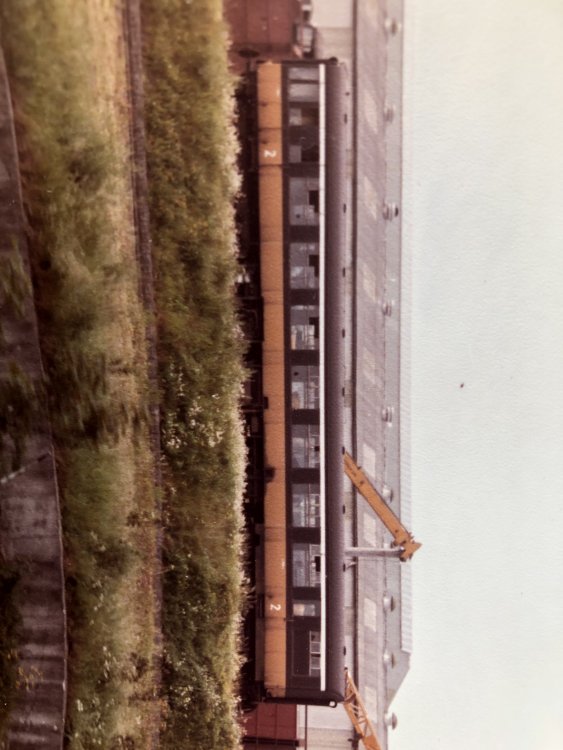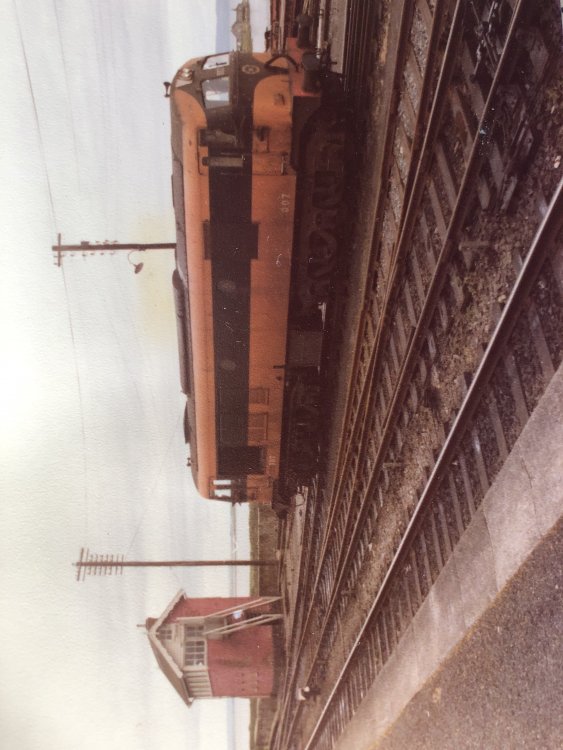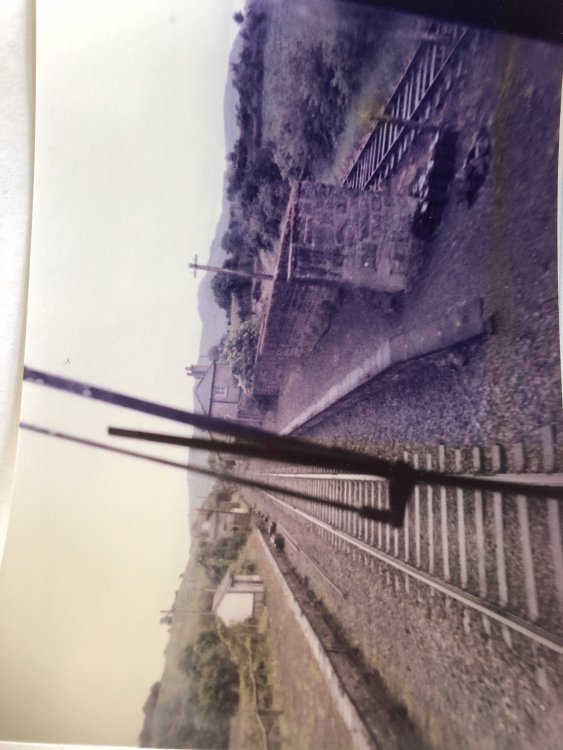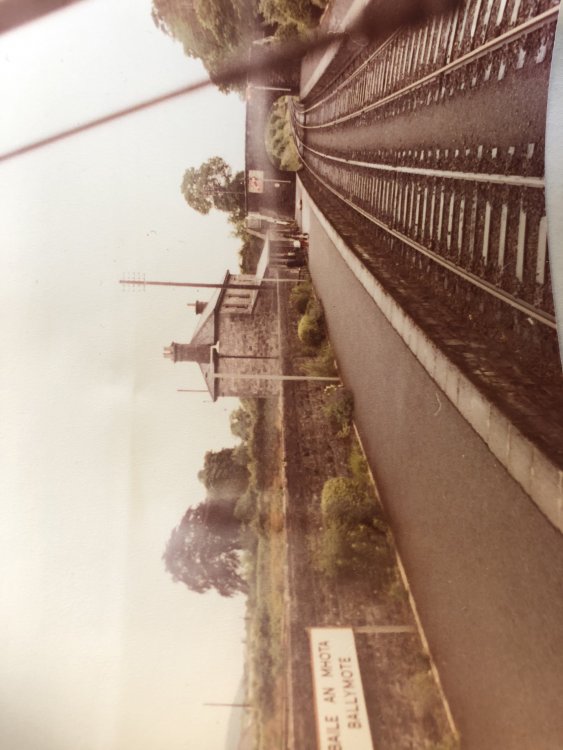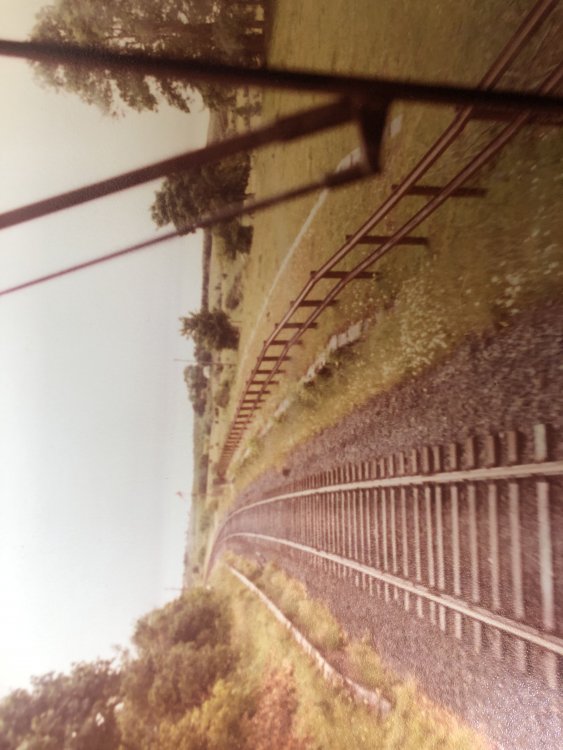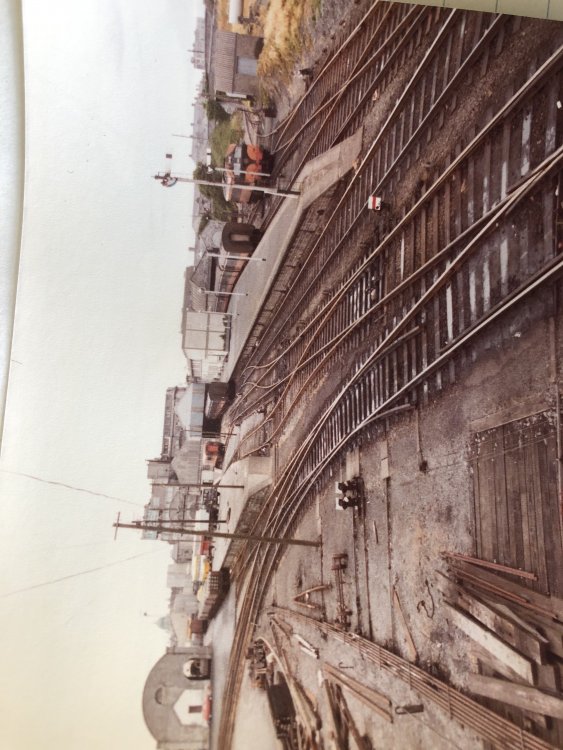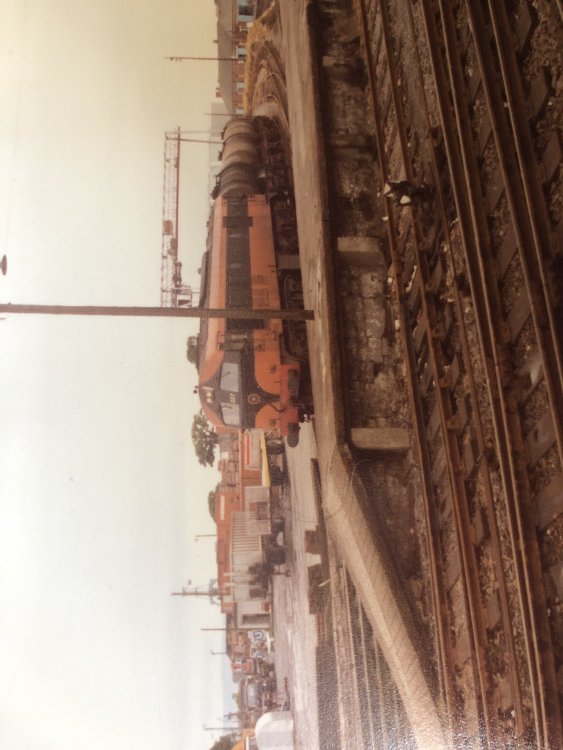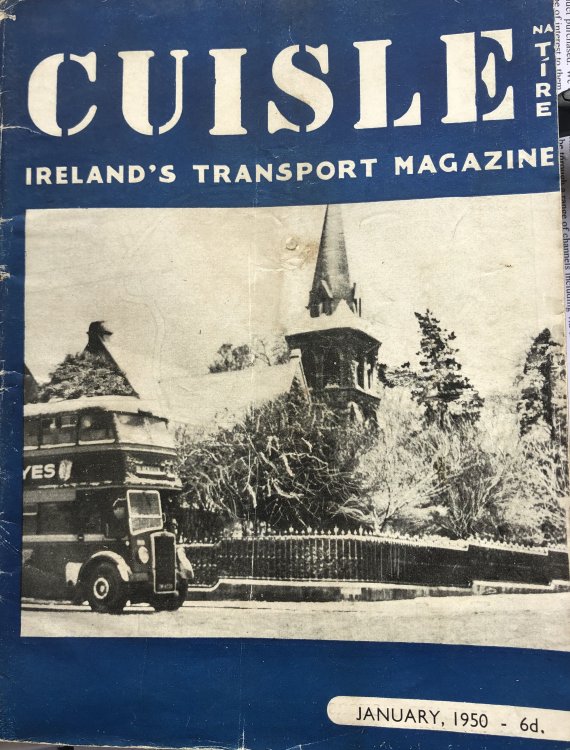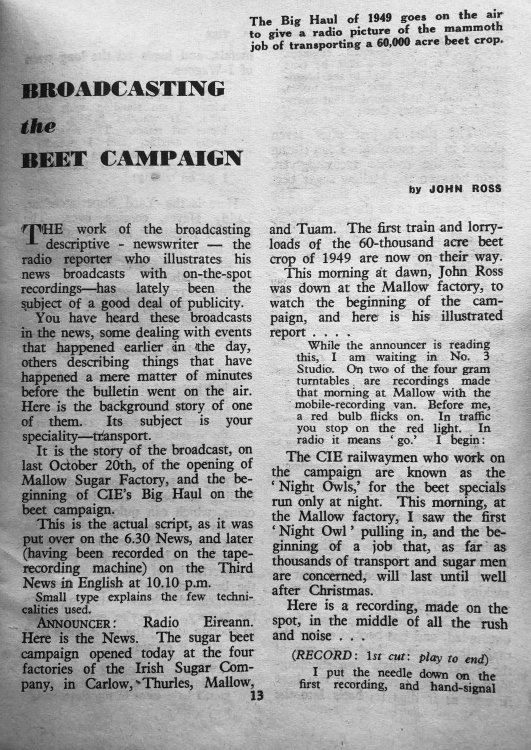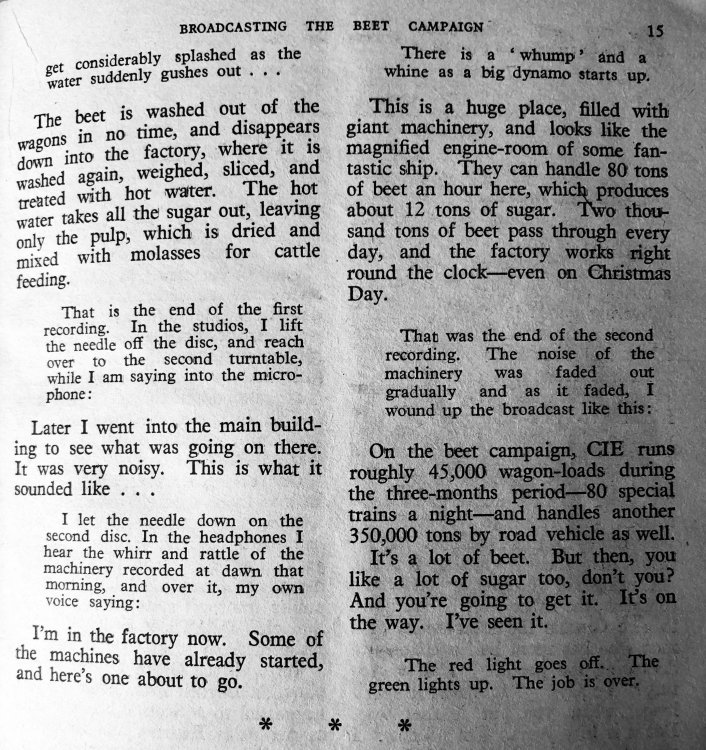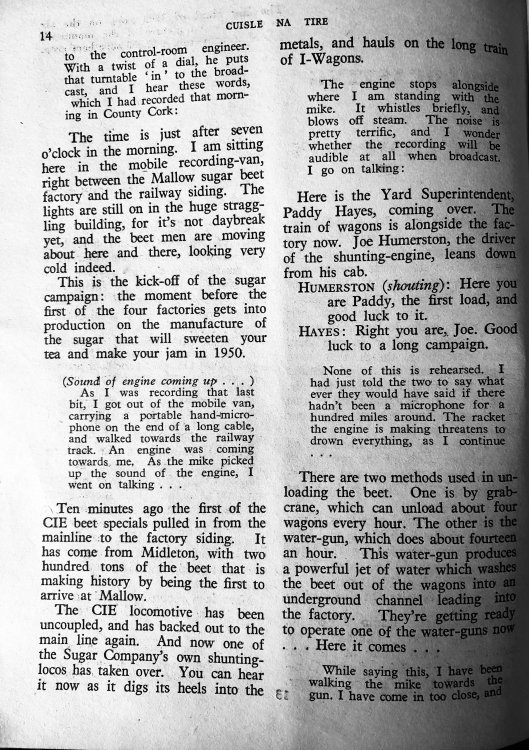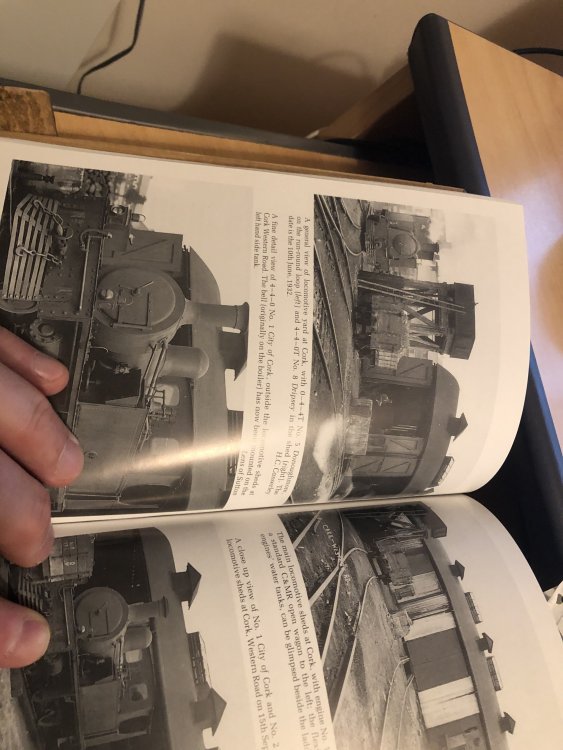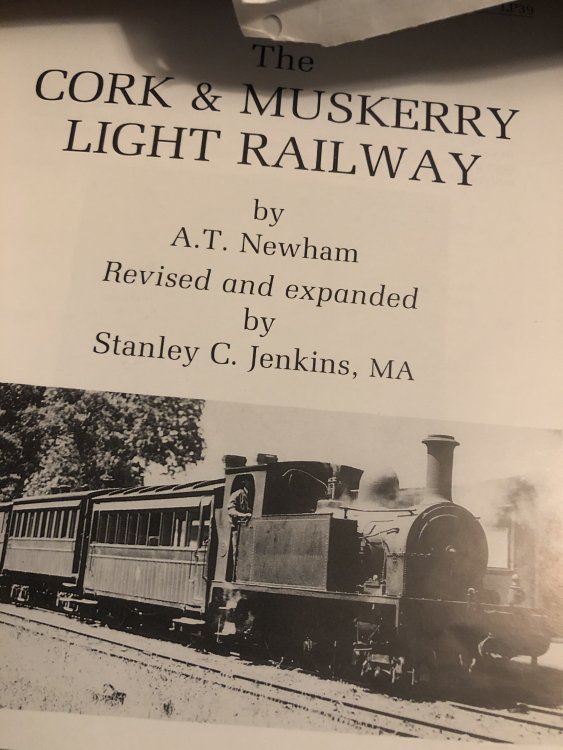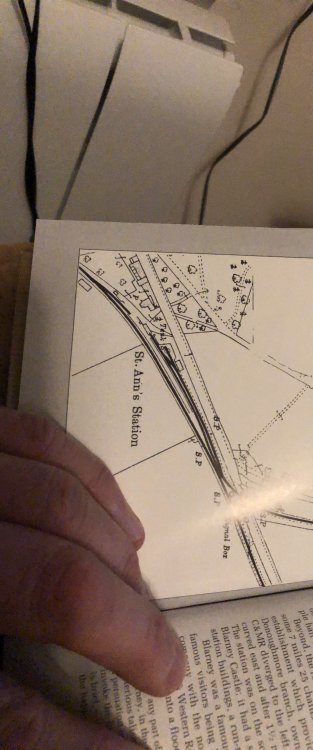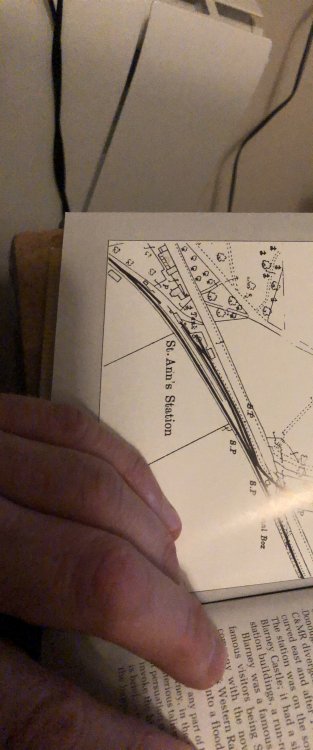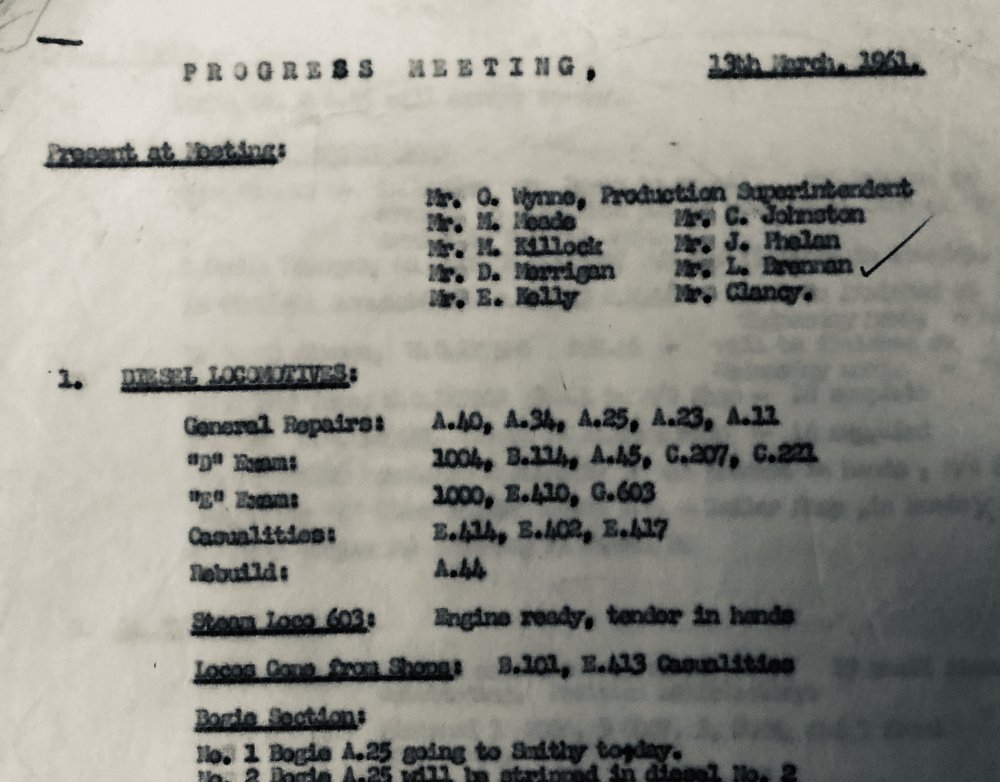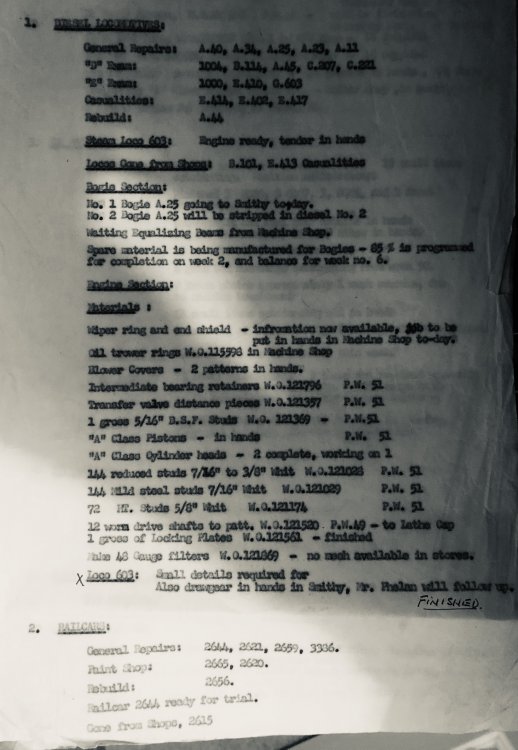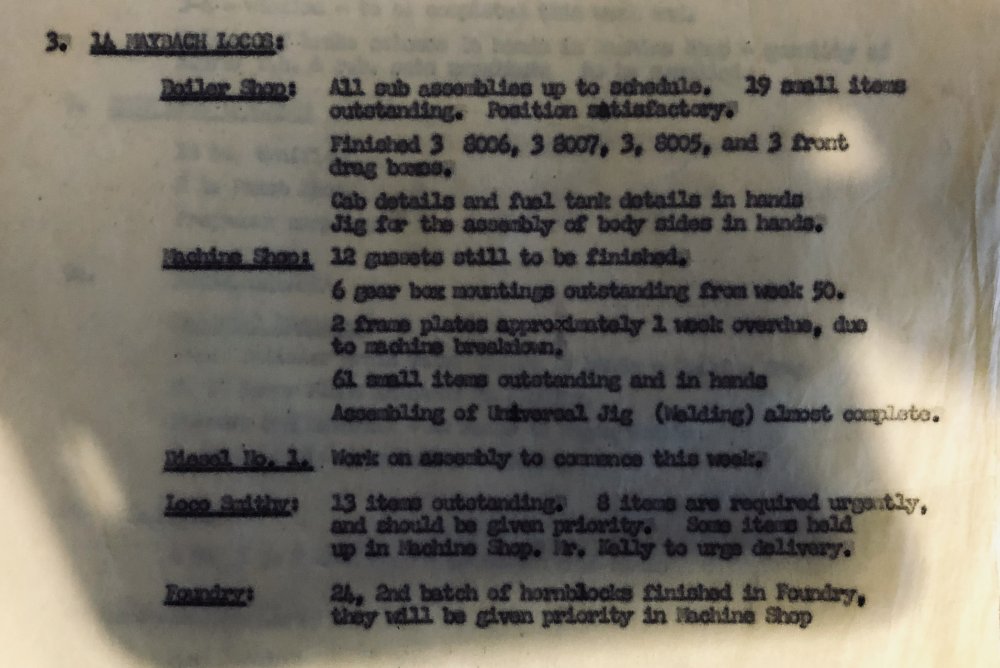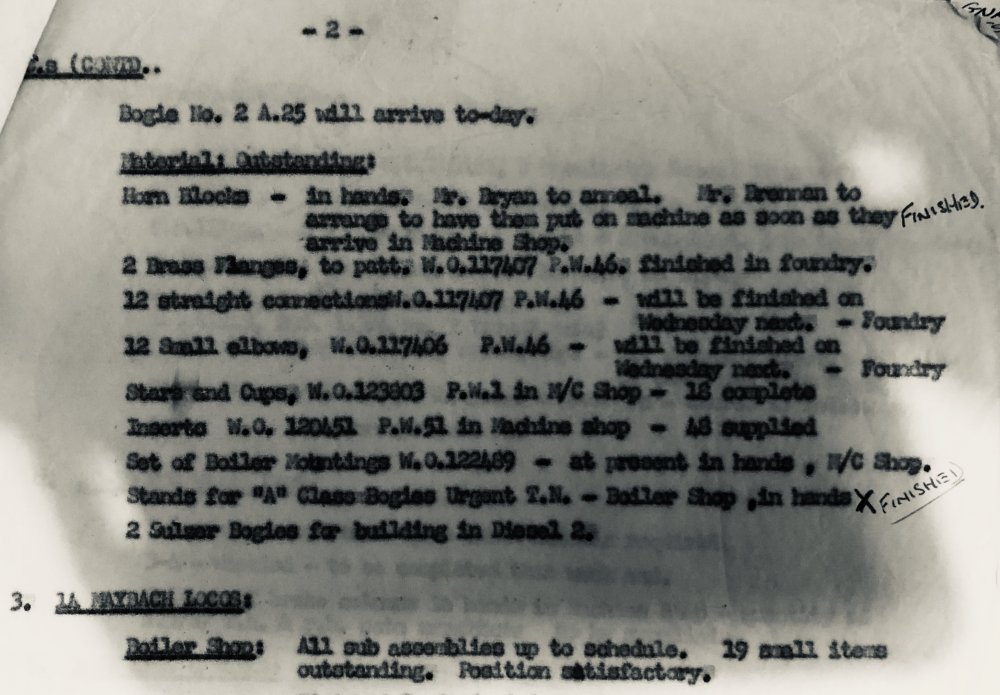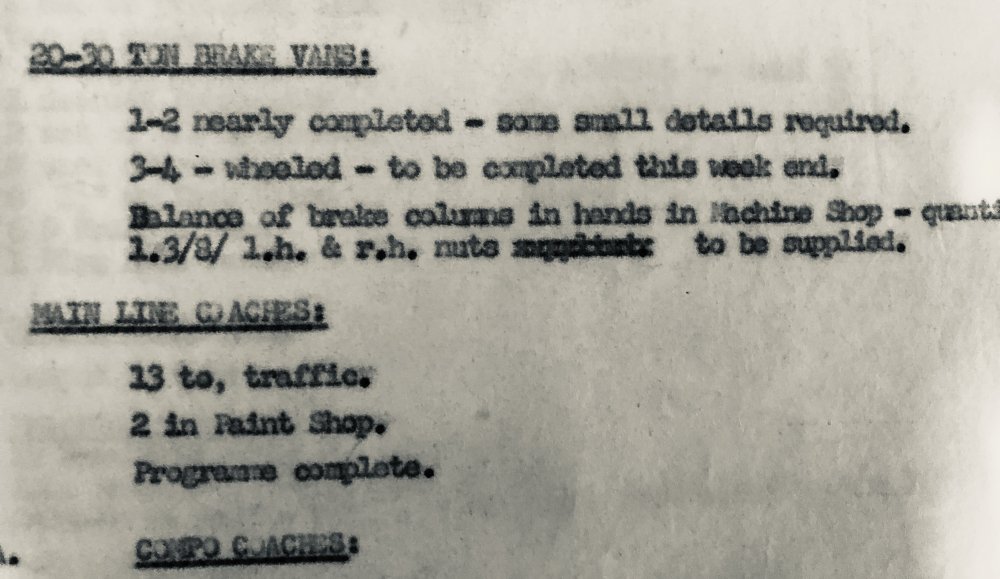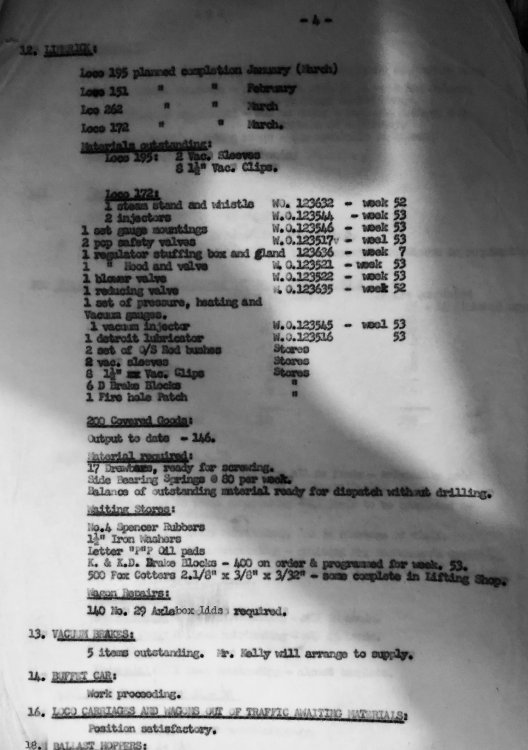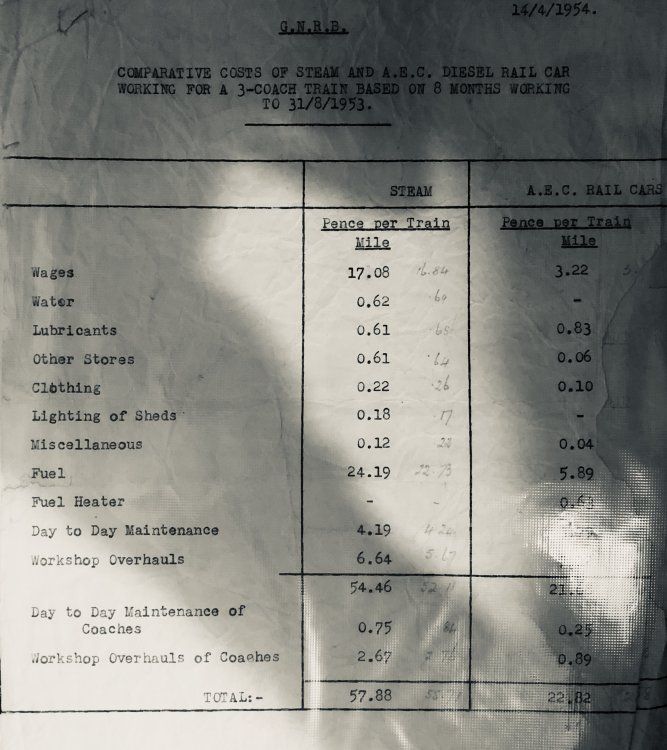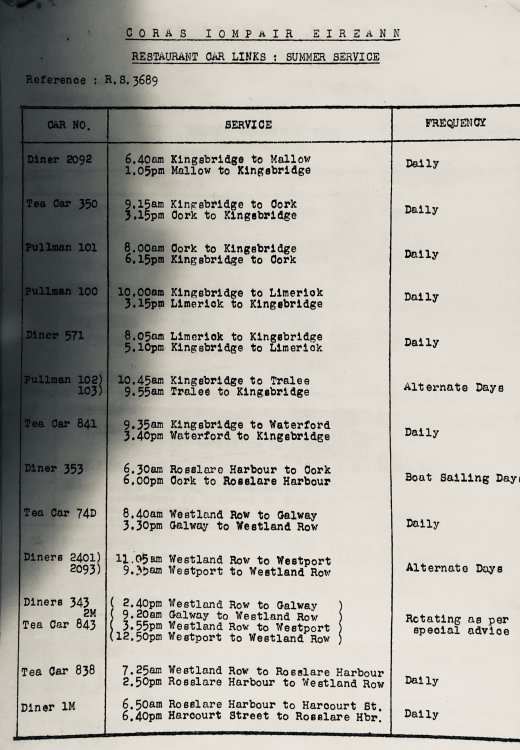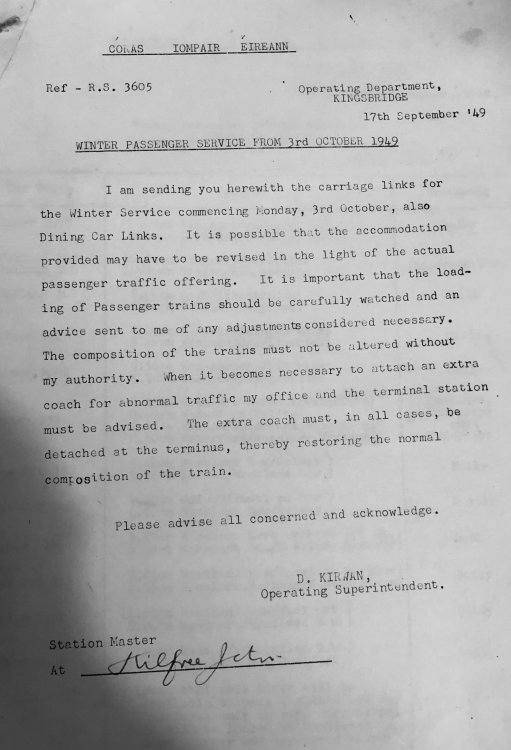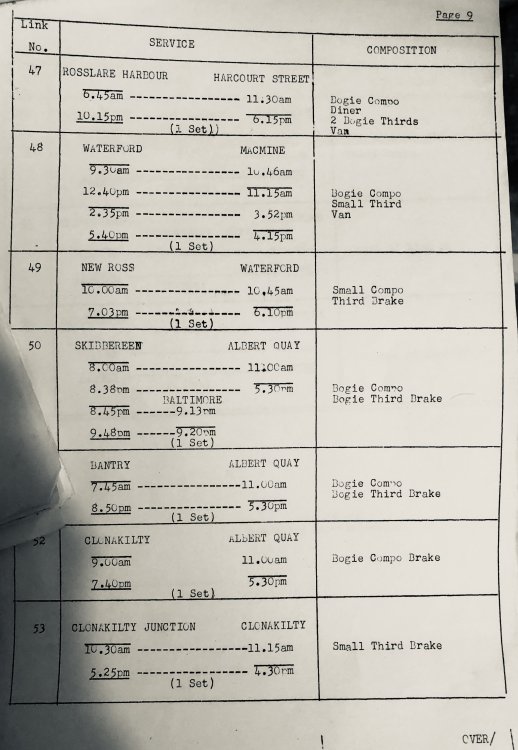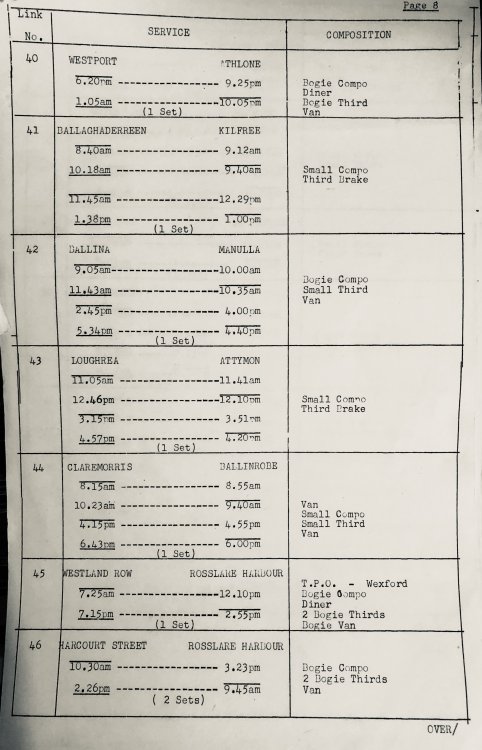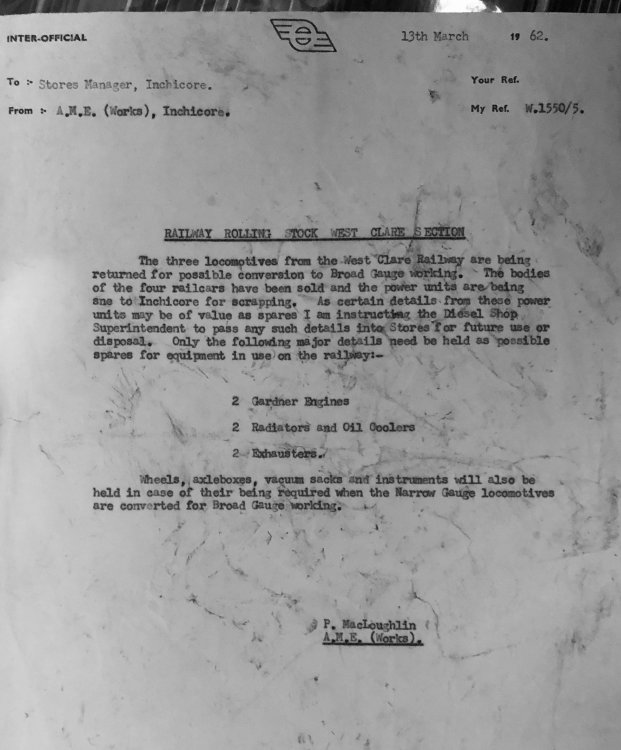-
Posts
15,831 -
Joined
-
Last visited
-
Days Won
393
Content Type
Profiles
Forums
Events
Gallery
Blogs
Store
Community Map
Everything posted by jhb171achill
-
Further meanderings in July 1978. Pairs of 121s seemed to be the main power on the “Principal Line” that summer. Views of Ballymote, Kilfree Junction and Ballysodare are from the cab of 133, leading 127. The train was a mixture of Cravens and laminates, about six bogies plus a van if I remember correctly. The GSWR van has a small “flying snail” still.
-
-
Excellent pic! Personally I am self-isolating. Given my age and a couple of "underlying conditions" I would be among the higher risk people. I've too much to do to get ill! Serious point, all - stay safe.
-
I'd use a stone-faced one - a wooden one wouldn't last long in a god-forsaken location like that!
-
So do a few of the politicians................
-
Yes, an 0.6.0! All of those labels have to be re-done. They were supposed to have had more info on them!
-
Beet campaign, 1950; a little light reading
jhb171achill replied to jhb171achill's topic in General Chat
I know!!! Mental! -
I'll be VERY interested to see this! Had it been built, it was going to be a single platform with a shelter of some sort, a loop and possibly a siding. I suspect if it had been built, it would have looked - initially at any rate - a bit like Burtonport.
-
But no hangovers!
-
Absolute lowlifes. For a businessman trying to make a living out of selling this type of consumer goods, it wouldn't be easy anyway.
-
I applied for the emergency payment today......
-
Tis very true indeed, seagoebox, and nobody bats an eyelid! Personally, I never liked the silver and black at all - I think the grey looks better. Like in steam days, it's all-encompassing, bogies and all - same reason - ease and convenience of application and maintenance. The modern 071 grey is just a shade lighter than in steam days. Must be something about Inchicore! I have no information about Inchicore testing blue, but while the paint might have been cheaper, it tended to fade. that's why the MGWR abandoned it almost as soon as adopting it. Maybe the used paints of not particularly good quality. Each railway had its own paint laboratory. One of those I took notes from was the late Marcus Bailie-Gage, who was a former Works Manager in Dundalk, and he had cut his teeth in the paint lab there. You might think, "what's the big deal? Just go to Woodie's and buy a load of paint!" - but in those days paint was comparatively expensive compared with today. railways took care of their corporate images too, so good quality paint of a consistent shade was deemed to be very important. Marcus told me of experiments conducted to get the right shade of brown for GNR carriages. They tried different pigments to make the SAME colour, then subjected them to tests to simulate weathering, wear and tear, and fading. Respective costs would be analysed too, before telling the paint shop what to do. The same applied in Inchicore. Many urban myths have grown up - there were a million types of GNR blue, a million types of CIE green, a million shades of red or maroon with the GSR, or NCC, or whatever, a million shades of CIE coach orange / tan. This simply isn't true. There were indeed variations, and some may have arisen accidentally, but each company has always striven to replicate a particular shade. For the purist, these variations are by now well documented, though to be fair they were not always, so a correct shade can be found out easily enough for those interested in such things.
- 24 replies
-
- 3
-

-
The grey originated in Inchicore Works when in order to cope with wartime economy, the GSWR started painting locos a flat overall grey, replacing the attractive shiny black lined in read and white which was current. It was quick and cheap. They just sloshed it over the whole thing. Not only no lining, but no lettering, and numberplates not picked out and polished. This appeared, as far as can be ascertained in 1915, but no later than 1918. When the GSWR became part of the overall GSR, all companies within the new GSR (i.e. virtually every single one, broad and narrow gauge, within the Irish Free State), did likewise. The GSWR was the "dominant" partner in the new GSR, and by degrees much work from other companies was transferred to Inchicore, so on went the grey. Major work on narrow gauge locos was no longer done locally, the engine would go onto a transporter and go up to Dublin in its nice old "company" livery, to return shorn of any brass nameplates it had had, and painted grey. Virtually all nameplates went into the melting pot too. When the GSR became part of CIE in 1945, this persisted. The result was that all-over grey locos could be seen from 1915 to the end of CIE steam in 1963. In GSR days, literally EVERYTHING got the grey, bar the 3 x 800 class. In early CIE days, suburban tank locos, main line passenger and (some) mixed traffic locos were given lined green. After about 1956/7, while few steam locos were repainted, many repaints in those last few years (and of only a few classes by then) were black. So it was economy mostly, but it then became, as they say nowadays, "the thing". Just as wagons were assumed to be grey, so were locos. Never mind the polished maroon of the NCC, dark green of the LLSR & BCDR, bright red of Donegal and the famous blue of the GNR; Inchicore was GREY. Limerick Works was GREY! Dull as ditchwater, and disliked by many, but nobody ever worried about cattle trucks being all grey! I'm sure they'd have looked well in varnished maroon too.........! Addendum: Among Cyril Fry's artefact collection are a number of GNR cast-iron station signs, painted bright blue and silver!
- 24 replies
-
- 2
-

-
With interest now growing in the early CIE & UTA era, this may be of interest. Bear in mind, this was ALL STEAM! Eighty special trains EVERY NIGHT plus shunting - probably 100 engines and crews, steam raisers and cleaners needed.... Model idea: a fictitious beet factory, 1949/50 season! Roderick 00 Works would need to do a huge re-run of J15s! The last two pages below are the wrong way round, but at least they're the right way up!
-
Britain certainly does. Even in museums and top-line preservation here, it has always been the case that strict accuracy takes a back seat, if it even registers at all. Now, before I am taken to task by those who say, "if you're that fussed about what livery something is painted in preservation, stop whinging and being so arrogant, and get your sleeves rolled up (and possibly, your WALLET out) and get a bit of work done", I get that. I have never sought to criticise ANYONE in the preservation movement, being VERY acutely aware of what is involved in all aspects of it, from paperwork*, engineering work*, restoration*, certification*, dealing with railway companies*, endless meetings*, financial planning and record keeping*, trackwork*, posting out membership forms*, planning tours*, to operating dining cars or crewing trains. You'll notice that all but the last two are marked*; these are tasks done by dedicated people, often in Dickensian working conditions, week after week. I have been one of them, from age 17 onwards. I started as one of what one of our premier preservation organisations calls a "griceling" (young "gricer"!) - a young and enthusiastic, but inexperienced volunteer. And my first job was to paint a carriage - entirely the wrong colour....! Had anyone said so, my answer would have been to the effect "Yeah, I know, but that's the paint that man over there gave me". Later, as financial person, I was once faced with a dilemma. When the RPSI was still running wooden carriages, I was once approached by the then carriage man at Whitehead. he had recently asked me for a budget to buy paint to cover two or maybe three NCC coaches in the running set, which were getting extremely tatty indeed. Finance was tight, as it so often still is. He told me he could get plain maroon for about two thirds of the normal price, so he could paint three coaches for the price of two. One was 1287, an old GSWR corridor now used as a "tarry" at Downpatrick, but then at Whitehead. he got the cheap paint and painted 1287. Some of us here will recall - it turned out almost purple. It was REAL cheap stuff! Suffice to say, the two NCC's in traffic ended up with proper maroon...... So when I refer to what, in preservation, is correct or not, I mean no disrespect to anyone involved in it - I am quite simply stating a fact, aimed just at those of us - and there ARE many - who genuinely want to know what colour something really was. I grew up in a household with several hundred mounted railway crests on every wall, most on actual original paint. So I have seen the green of the Highland Railway of Scotland, the brown of the coaches of the Wrexham, Mold & Connahs Quay Railway, the maroon (darkish LMS shade) of the Clogher Valley, the green of the Blessington tramway and the green of CIE, close up, every day, from age 0 to a few years ago. I've seen these colours in daylight, dull, bright, sunlight, artificial light, the lot, so I am in the lucky position to be familiar with them. Since as a result of this, from an early age, I have always had a keen interest in such things and took every opportunity through my life to quiz as many people as I could about what was what in the past. Some people have a very good artistic eye for colour, others have little. I knew of a now-deceased railwayman who was a brilliant engineer, but could hardly remember whether Maedb was green, pink or tartan. The first thing anyone sees in any object is its shape and colour. Thus, to me at least, livery detail is essential. Hence my interest; apologies for the rant. I am aware that not everyone shares this interest, but this does not ever mean that people like me disrespect them or what they do; far from it. The efforts of ALL our preservationists are to be appreciated and welcomed. If something is the wrong colour, big deal - it can always be repainted. But it's important that (a) the correct information is out there, and (b) confusion is not created, perpetuated or encouraged because of an earlier incorrect assumption. I think it was a former curator of Cultra who very famously said, and he was 1000% right, "Scrap an important locomotive, and there'll be a complaint. Paint it the wrong colour, and there will be World War Three!". Cultra, the RPSI, Downpatrick, Drew Donaldson and Cyril Fry, AND ME, all painted things both real and model in ways they never appeared. Ideally, restoration jobs would all be correct, but as long as the info is out there, I feel that whatever little I may be able to contribute at this stage of life, well there it is......! To go back on track, Eoin's model.....an absolute beauty, as all will agree!
- 24 replies
-
- 3
-

-
Some were red in reality, others black! I’ve a list somewhere - must delve. I know we’ve a select SLNCR following here nowadays! This is exactly why I keep detailed notes of livery stuff. To many modellers it doesn’t matter a flying damn what colour something is or was, as long as it’s well engineered or built accurately. As a child I played with Senior’s coarse scale O gauge layout (Eoin, I still have track for you that I mentioned months ago when finally clearing his attic!). In scenic, loco building and carriage building terms it was indeed coarse, but it was fully and properly signalled. To others, all manner of different aspects are what they get primary enjoyment from, and that is the great thing about the hobby. Nobody is right or wrong, it’s just one’s opinion. For me, I’ve my own preferences, just one being livery accuracy. Some people want every single detail as accurate as possible, and if anyone has access to whatever detail they’re looking for, then it’s well worth passing on. I suspect the red (yes, much in the IRRS is the wrong colour - quite brightly painted makers plates, company crests mounted on the wrong colour background, etc), is one of these. I agree with others it looks well, but so does the dark MGWR-shade blue that Fry put on his model of a GNR “S” class in Malahide. The lined green on 461 looks great, much brighter than all-over grey. But it never carried it, and the green is a shade off anyway. None of this matters, I know this perfectly well, in the long run. If the choice in Cultra was between painting 800 pink and amber, the Donegal railcar tartan and lime green, or scrapping both, I think we’d all be out with the paint pots! But I do feel that where possible, preservationists, historians and archivists do a service to those who seek accuracy in such things, like many modellers. Anyway; back to my self-enforced confinement.....!
- 24 replies
-
- 4
-

-
Re the GSR loco livery.... I've seen this, and the commissioned paintings front and back on that book are as absolutely superb as the contents. However, unless a few were ever done like that, eyewitness reports of a number of individuals who were regulars in Inchicore were all specific that plates were usually plain grey, but the raised rim and numbers could be - (a) painted over - not highlighted at all. This is evident in the occasional pic showing a (occasionally!) newly painted loco! (b) picked out by rubbing to bare metal - rare, but reported as seen (c) most often, picked out in pale yellow or cream. Photos bear this out too. The book also mentions black roofs and smokeboxes. Again, eyewitnesses (all of the ones I refer to now dead) report plain grey; their point bring that in Ireland and Britain (but, as a matter of interest, not mainland Europe), a smokebox in anything other than black was otherwise unheard of. I once owned a plate off a Midland "E" class, GSR No. 560. It was painted grey. On scratching the paint with a nail, there was older grey underneath, not black. Sadly I sold it years ago. Where this may be coming from is the fact that the GSWR had black-backed numberplates not only when their engines were black (pre-1915) but when they were green before that. About 1962, I think, maybe '61, one J15 was repainted grey in Cork. Since about 1955/6, the few cie repaints of steam engines got a coat of black. But what was interesting to livery-nerds like me, was that this time this engine stood out as it had, in the eyes of the witness, "uniquely", grey paint but black smokebox. jhbSnr recalled seeing a J15 literally being pushed out of the paint shop, still smelling of paint rather than hot oil, and he was curious to see the numbers just rubbed bare metal. Upon asking if they were to be painted, he was told no. He had not seen one like that before, but did subsequently. Dirt and weathering often made smokeboxes look darker - we saw this with 186 in recent years. The late Billy Lohan of Galway assured me all was grey, this corresponding with what others had told me too. It's notoriously hard to define colour from a black and white photo, especially if the subject matter is dirty! However, clean locos existed, and sometimes can be clearly seen in photos, not least in the excellent "big green book". A black plate with red numerals would definitely show up as a much darker patch on many photos - red always shows up pretty dark on a b & w photo, never mind black. And this isn't the case. I have alluded before, though, to one of the few exceptions: in late CIE days, two of the 800s got red background plates, and at least one, maybe two, of the Passage 2.4.2Ts on the C & L had non-standard SIZED plates, plus red numbers, in the late 50s. But that seems a one-off; no colour photos I've ever seen show red numerals anywhere on a GSR / CIE loco. Wheels and motion were certainly grey too. Cab interiors varied. Some were also all-grey, adding to the ethereal dullness of the livery! Other were a mid brown internally, roof underneath included. Others still had the more conventional mid-brown lower and cream upper, though I wonder was that more in CIE times. Interesingly, Fry painted one model in a style similar to the painting, but he was known to take liberties with liveries, despite his protestations to the contrary! Eight-coupled No 900 is in Maedb's fully lined green on his model, but it spent all its life grey. The late, great, Drew Donaldson liked CIE lined green so much that he painted almost ALL his models that colour, whether they ever carried it or not - and most didn't!
- 24 replies
-
- 3
-

-

-
Yes, you're certainly right about the C & L, and I wouldn't be surprised about the T & D. So, I'm going to cautiously go with C & M mileposts for the time being! It is indeed the sort of thing that jhbSnr would have been likely to have made notes of. Many thanks for that - you just never know what you'll find.....!
-
I have an excellent book on it which I can lend you. Loads of photos, full history, a couple of loco drawings, track plans..... PM me and I can post it to you.
-
It’s 1961, and IRM have been given a tour of both Inchicore and Limerick works, on the STRICT condition that they bring out models of wagons to be built in the next 20 years, and an A class. Sit back and visualise what we’re seeing around us; And..... Linerick has four steam in hand.
-
Ah!!!! Minister, you've maybe cracked it! He went into Macroom twice just before it closed, once in the van of a cattle or PW train and once in the cab. Could the shapes be Macroom mileposts? “Load 22 + van” could refer to a cattle special.
-
Very true! Then I'm flummoxed!
-
CARRIAGE ALLOCATIONS 1949/50 This gives an idea of train consists seventy years ago. Sounds a long time, but only a few years ago, nobody was modelling anything much before 1975. Then we got well into the black’n’tan era. Now, with J15s, A, C, B101,121,141,181, E & G classes, laminates, Park Royals, Tom vans, various loose-coupled goods vehicles, we’re into the “grey’n’green” era. One step more and this stuff’s of use. Now - the carriage allocations are of interest to anyone wanting to create a 1950s / early 60s branch line scene, as perusal of the attached lists show what trains were typically made up of. I say "typically"; on days like fair days, and extra coach might be added. If the normal branch set was taken away for maintenance, gawd knows what they might put in there instead. Senior told of a jaunt down some branch in the 1950s with a quite new CIE "Bredin-design" coach, probably only a few years old, with an absolutely ancient, clapped out MGWR 6-wheel brake third behind it. For anyone interested. I have this list to cover THE WHOLE CIE SYSTEM FOR 1949 / 50, main lines an'all. So if anyone wants to know what was on any specific line, ping me privately and I'll send it to you. The GNR's perusals of running costs for AEC cars crept in here too.....
-
The locos weren't too varied, Colin, but the carriages were actually painted at least three distinct reds. Most were much as now, but some were a maroon and cream colour. The so-called "F" "Saloons" were painted pillar-box-red all over in the 1970s. As far as the locos were concerned, what happened with the different pigments that you mention, was that while locos looked the same (and were, to all intents and purposed) when newly painted, different batches of paint faded at different rates. Thus, some would look a bit more brownish in time, others not. Weathering and filth, as with all things steam, never helped! (I'm assuming you're another IOMR enthusiast, like me....)
-
Walker Diesel Class F - ECMbuild in 4mm for OOn3
jhb171achill replied to murrayec's topic in Irish Models
- 136 replies
-
- 1
-

-
- class f
- west clare
-
(and 1 more)
Tagged with:
.png.c363cdf5c3fb7955cd92a55eb6dbbae0.png)

